Vertical Gardens Are the Ideal Small-Space Solution—Here Are 7 Ideas to Get Started

TABLE OF CONTENTS
On This Page
What Is a Vertical Garden?
Benefits
Care Requirements
Best Plants
Ideas
Whether you have a collection of houseplants or an abundant outdoor garden, finding space for your greenery is an issue beginner and experienced gardeners alike encounter. One way to conserve room on your property that doesn't limit your growing potential is to convert to a vertical garden. This style of gardening utilizes vertical structures, like walls, trellises, fences, and doors, which provide support for plants to grow upward rather than outward. The space-saving technique can be used to grow flowers, herbs, and vegetables, both indoors and outdoors.
Related: 9 Garden Trends to Try in Your Backyard This Year
What Is a Vertical Garden?
Vertical gardening is the art of using vertical space to grow plants, whether you display them in hanging baskets, along trellises, or install a full-scale living wall. "A vertical garden inverts the typical structure we think of for a garden," says Joe Raboine, the director of residential hardscapes at Belgard. "Rather than a flat or horizontal bed, vertical gardens are installed along some type of vertical support"
Benefits of a Vertical Garden
There are many reasons someone may want to create a vertical garden inside their home or in their backyard. "First, vertical gardens are great for people who may not have ample backyard space but still want to have some color and greenery," says Raboine. "You can even have a vertical garden if you just have a small apartment terrace."
In addition to being major space savers, vertical gardens also help nearby plants that need protection from sunlight and wind. "Vertical gardening can also save on water usage because water dripping from the top layer will also water plants below," says Carrie Spoonemore, of Park Seed and co-creator of From Seed to Spoon.
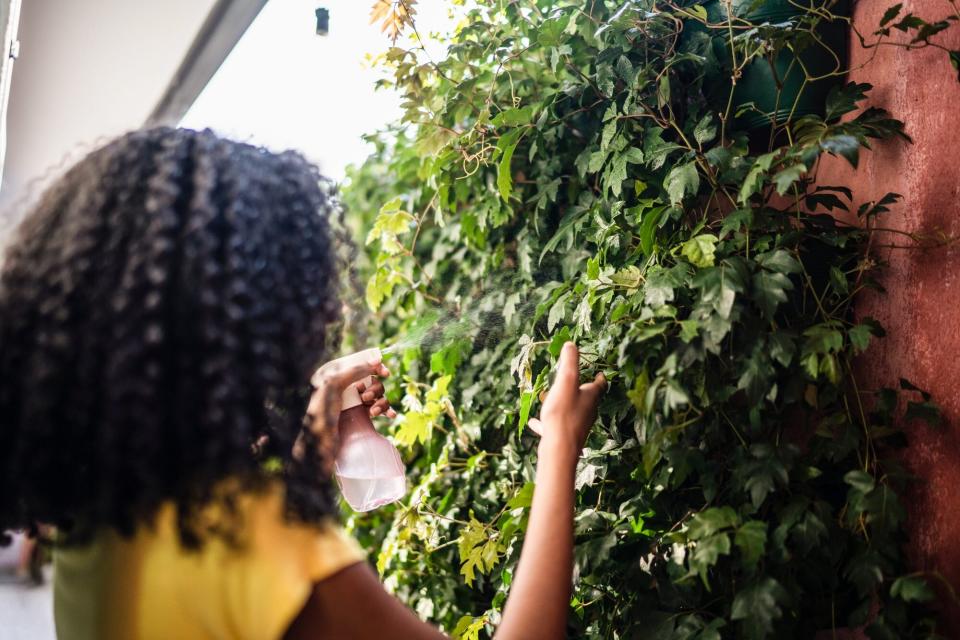
GETTY IMAGES
How to Care for a Vertical Garden
The care requirements for a vertical garden depends largely on the types of plants you're growing and the composition option you've chosen. But there are some general maintenance guidelines to follow when growing a vertical garden.
Light
Start by finding a location that receives adequate sunlight. "Light will really depend on the plants you choose to grow, but ultimately you should pick a spot where your plants will receive at least six hours of sun," says Raboine. Near a window is usually your best best and will allow you to more easily control whether your plant receive direct or indirect sunlight.
Water
Maintaining moisture levels in your plants can be made harder or easier, depending on your container. "You need to have a growing medium that holds enough water so the plants don't dry out, but doesn't hold too much water so the plants drown," says Gennaro Brooks-Church, founder of green building company Eco Brooklyn Living Walls.
The best way to efficiently water your vertical garden is to start at the top and work your way down to the bottom. "Water can trickle down, and you can be sure not to overwater plants on the bottom," says Spoonemore. "If your vertical garden is outdoors, consider investing in a rain wand to ensure you can get to those hard-to-reach areas."
Soil
Look for well-draining potting soil when creating your vertical garden. "It's important that the soil does not hold onto excess water and is aerated," says Spoonemore. You should also frequently check soil levels when tending to this type of gardening system.
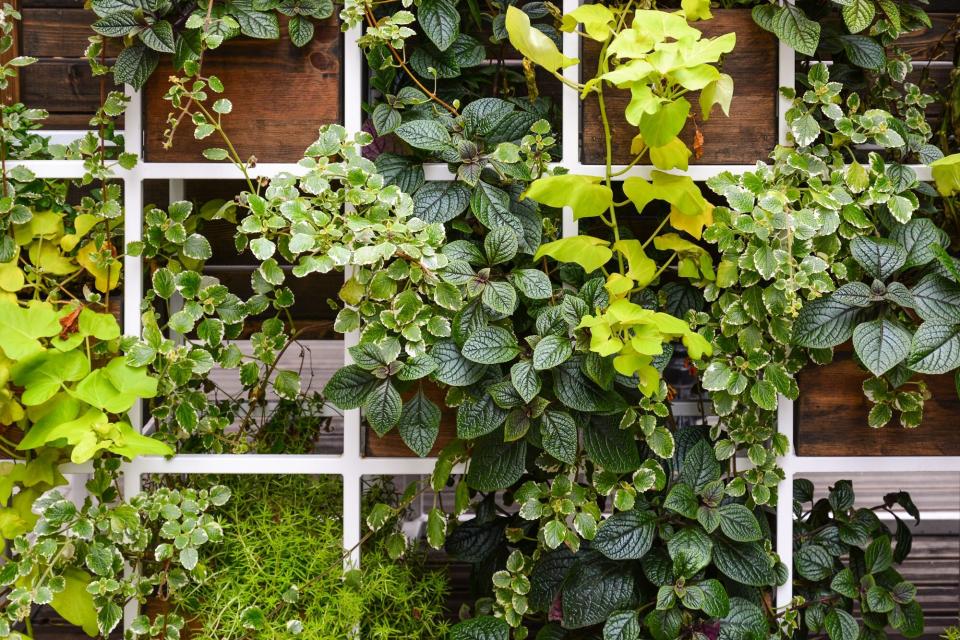
Iryna_L / GETTY IMAGES
The Best Plants for Vertical Gardens
Any plant that is suitable for container planting will thrive in a vertical garden. "When choosing plants for a vertical garden, keep in mind that plants with shallow roots, like annual flowers, vegetables, and herbs, will perform better in a container than perennials," says Spoonemore. Vining plants are generally some of the best to grow when vertical gardening because they create a beautiful trailing effect along fences, trellises, and other upright structures.
"Many vegetables need a deep root system to thrive, something that isn't always possible on a wall," says Brooks-Church. But there are still options you can try—leafy greens, like lettuce or spinach, have shallow root systems that are suitable for container planting. Herbs, including mint, parsley, and rosemary, are also great options for vertical gardening thanks to their shallow root systems.
Vertical Garden Ideas
There are a few different compositions to choose from when creating a vertical garden. One popular method is to suspend a collection of potted plants from vertical spaces, like trellises and windows. "For larger backyards, structures like arbors, gazebos, pergolas and arches can create a more garden room-like feel and offer a focal point within the space," says Raboine. Alternatively, you can create a pocket garden, which is accomplished by tucking plants into pockets made from canvas. Or simply place plants on a wall with built-in slots.
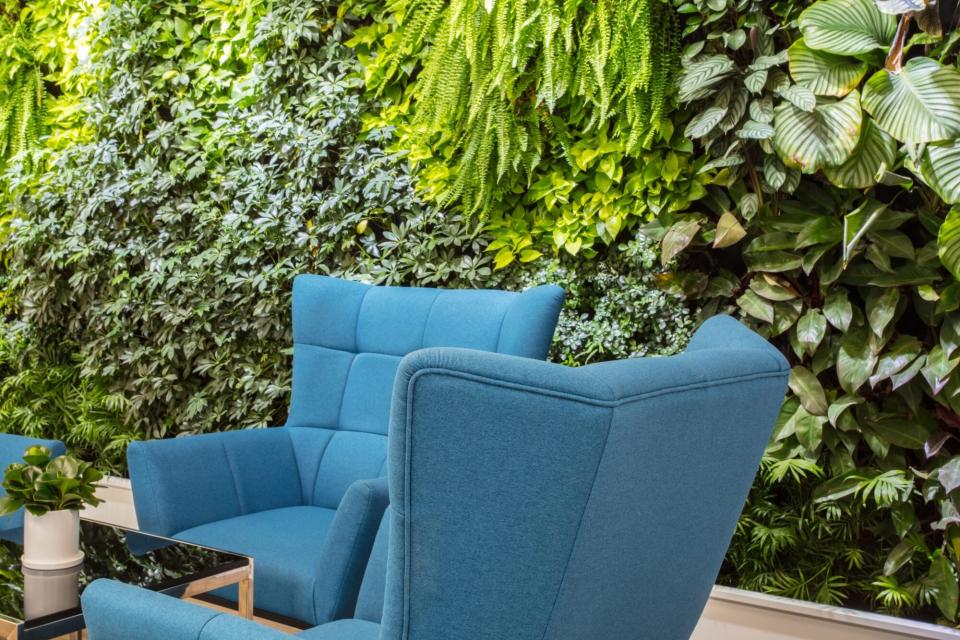
GETTY IMAGES
Living Wall
A living wall is essentially an indoor ecosystem of plants and typically includes varieties that thrive year-round. "One of the benefits of living walls is that they allow us to incorporate an abundance of plants inside without things getting too crowded," says Rebecca Bullene, the founder of Greenery NYC. "Living walls typically will have hundreds of plants in them—it would take up too much room to put those on the floor, you'd have nowhere to walk." Another bonus: plant installations double as living art on the walls.
Canvas Shoe Organizer
A vertical garden is as simple as hanging a canvas shoe holder on the back of your door in an area that receives enough sunlight. "One benefit of an indoor container garden, such as a shoe holder, is that plant care and culinary usage are right at your fingertips," says Spoonemore. Fill each shoe slot with small potted plants, like herbs, using containers with trays to collect draining water.
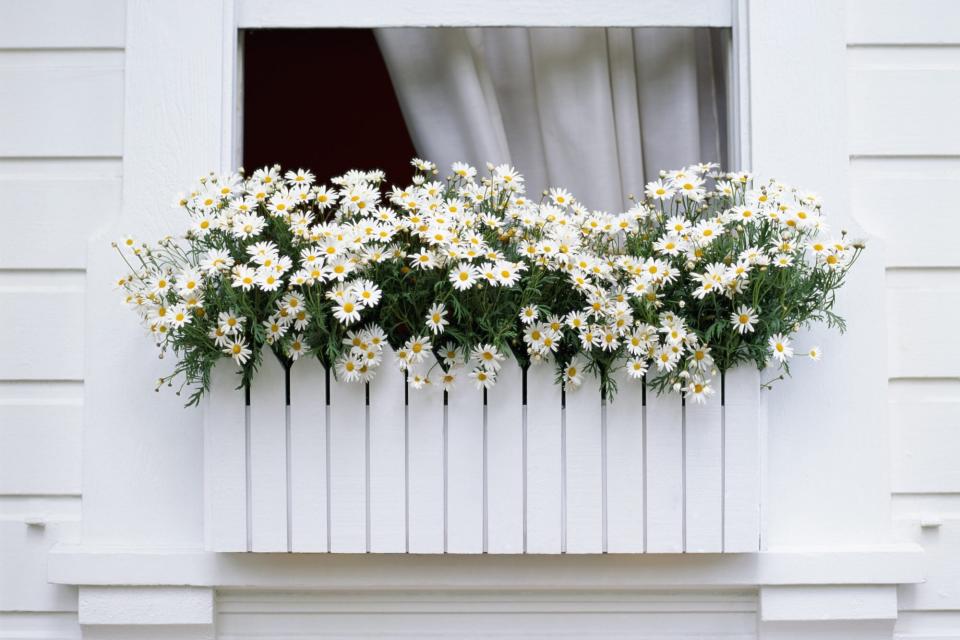
Victoria Pearson / GETTY IMAGES
Window Boxes
Plants with shallow roots systems, like many herbs and some annual flowers, will grow well in window boxes. "Window boxes can be a great option, depending on your home style and the effect you want to achieve," says Raboine. "You'll need to consider how it will be mounted, depending on the material of the exterior of your home. Brick or stucco has to be drilled into in order for anchors to be installed."
Border Plants
When people think of vertical gardens, small potted plants often come to mind. But you can also conserve space with plants that grow right in the ground. "Column style plants, like trees, are another great option for your vertical garden," says Raboine. "They create more visual interest and can somewhat break up different plants or structures in the garden. They also do not need to be grown with supports."
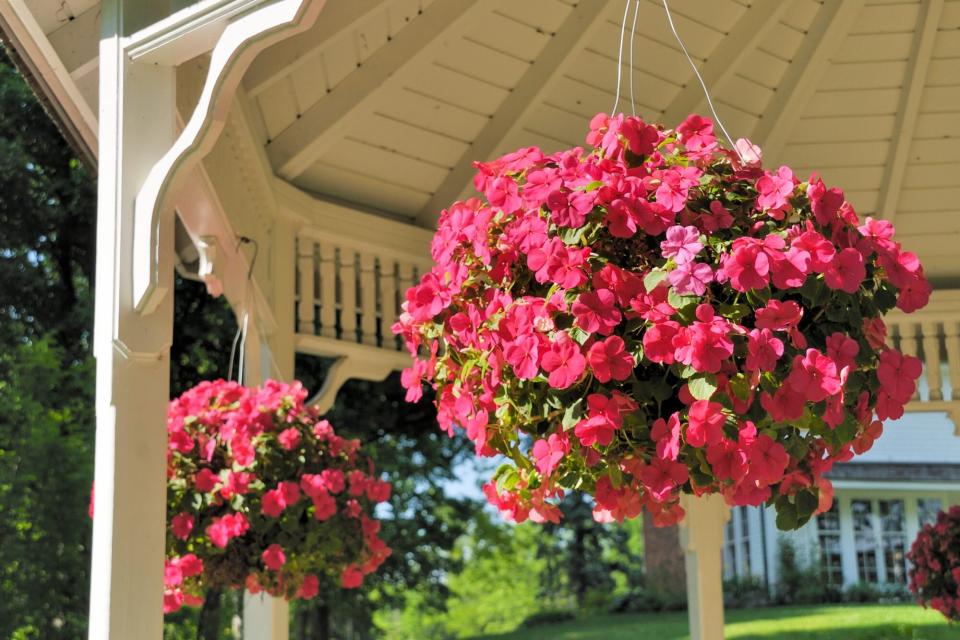
RiverNorthPhotography / GETTY IMAGES
Hanging Baskets
Hanging baskets are one of the easiest ways to grow plants without taking up precious space in your ground, on windowsills, and other structures that commonly house greenery. "Hanging baskets are great if you have minimal space to work with," says Spoonemore. "They also don't require much installation or a great deal of maintenance."
Floating Shelves
Indoors, consider hanging floating shelves on your walls as an easy way to display plants. "Floating shelves can be placed strategically so that potted plants can trail and fill in spaces as they grow," says Spoonemore.
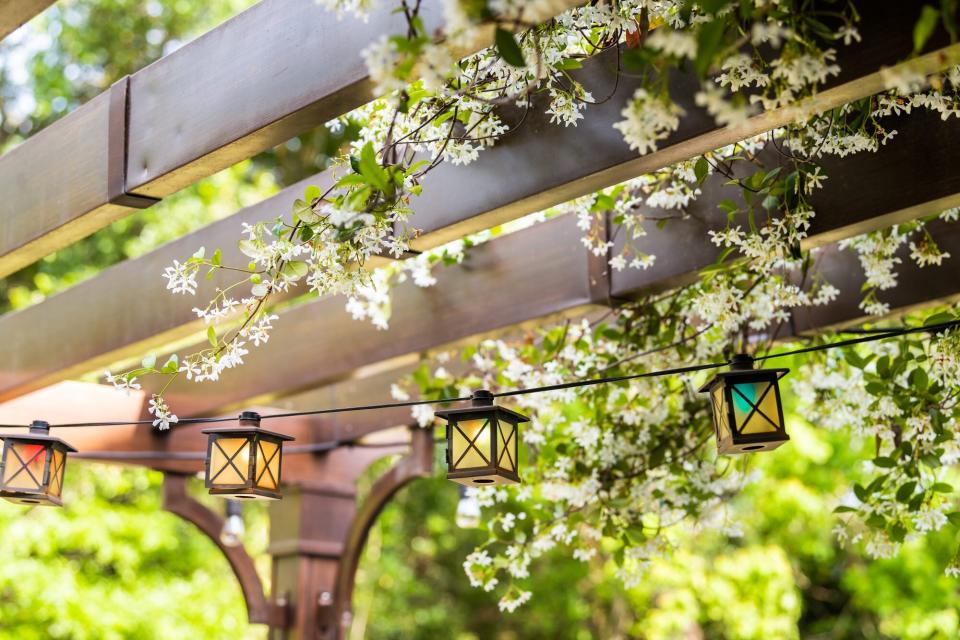
ablokhin / GETTY IMAGES
Trellis
If you want to add more greenery to your backyard but are running out of ground space consider adding a trellis. Grow trailing plants or flowering vines nearby, which will grow along the structure and fill it in with time. "Trailing plants are beautiful additions to vertical gardens," says Raboine. "Because they trail or hang, they have a beautiful lengthening effect that feels very organic and dramatic, especially along a vertical structure."

